It has been nearly a year since the world stood still here in Saskatchewan. Prior to the pandemic we had the technology to provide virtual services, but it was still considered best practice to see people in-person for all services. This changed rapidly March 18, 2020. In practicing virtual services since this time for the vast majority of the time, we wanted to highlight some of the answers to “Why Virtual Services?”
No need to worry about exposure
The most obvious reason for those that are more conservative is your reduced exposure. You can have your service provided from the safety of your home. There is no need to worry about who all has been in the building.
Childcare Barriers are Reduced
Our biggest struggle is following the recommendation that people should come independently to appointments. We LOVE helping mommas, kiddos, and babies. Not being able to share our toys and baby containing options for families has been a big challenge for us. Having virtual options for services allows us to still see those with busy families; while reducing your costs and eliminating childcare costs!
No Drive Time
YES! We are able to see anyone in Saskatchewan that is a resident of Saskatchewan (for physiotherapy), and greater expansion across Canada (counselling and nutrition services). This allows us to significantly reduce the time away from work or family and increase the efficiency of appointments.
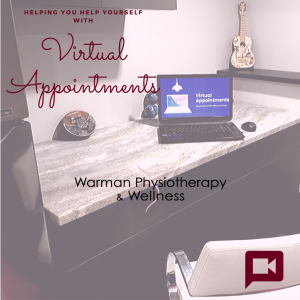
We Still Get a Lot Done!
There are very few appointment types that can’t be done virtually! Especially when it comes to the first appointment. This is where we are gathering information on what happened and how everything is feeling. Getting some movement and visual observation can go a long way. If it isn’t an appropriate issue, injury, or area to be seen virtually, it is our responsibility to ensure that you know and we continue with alternative options – which we hold ourselves highly accountable for.
Remember, the most important piece to improvement is not what we DO, it’s what YOU do!
We see people for anywhere from one appointment every few weeks, to once a week. We impact change from our knowledge and applying to your homework to do between appointments.
“I have been treating people virtually since March 2020 and I am really loving the option for people. It has allowed me to get to know my clients even better, as well as work within the restrictions with a variety of health limitations for my clients.” ~Haylie
If you want to learn more about our virtual services check out our other publications!


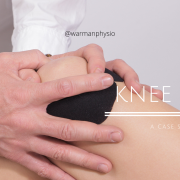
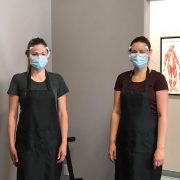
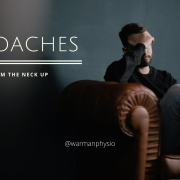


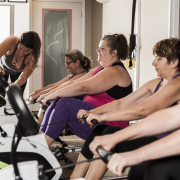
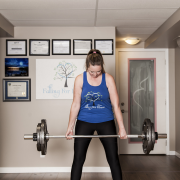
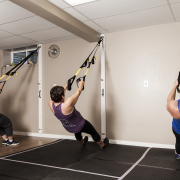
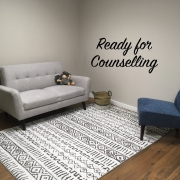
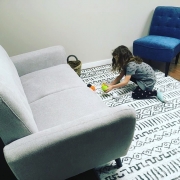

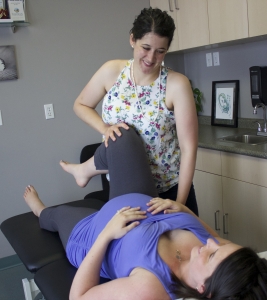
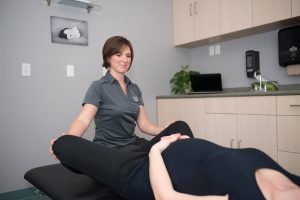

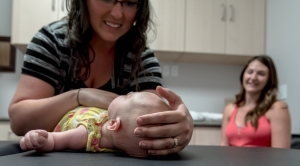
 Seeing prenatal and postpartum women, infants and children at the clinic has been the clinic ‘niche’ from the beginning – we just do it a lot! So having that colicky baby that cries the whole time? We’ve got this. Having that baby that needs to lay on momma the whole time? No problem. Having the two big kids that for some reason just NEED to both be on the blue chair? We can figure that out too. Our therapists will hang onto babies, use the swings, and help older kids problem solve during appointments, and sometimes (when mom is comfortable), Laura will snag some of the babies and wander around with them so the mommas can focus on their appointments. It is wonderful to have the content babies and kids in at the clinic, but the kids that are more ‘challenging’ aren’t any less welcome. We enjoy seeing all the kids that come in and want them to feel welcome as well!
Seeing prenatal and postpartum women, infants and children at the clinic has been the clinic ‘niche’ from the beginning – we just do it a lot! So having that colicky baby that cries the whole time? We’ve got this. Having that baby that needs to lay on momma the whole time? No problem. Having the two big kids that for some reason just NEED to both be on the blue chair? We can figure that out too. Our therapists will hang onto babies, use the swings, and help older kids problem solve during appointments, and sometimes (when mom is comfortable), Laura will snag some of the babies and wander around with them so the mommas can focus on their appointments. It is wonderful to have the content babies and kids in at the clinic, but the kids that are more ‘challenging’ aren’t any less welcome. We enjoy seeing all the kids that come in and want them to feel welcome as well!
